By Ana Rodriguez Soto - The Archdiocese of Miami
Photography: Ana Rodriguez-Soto | FC
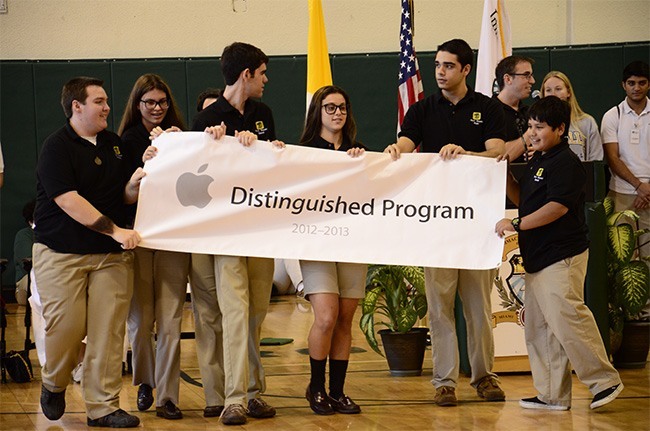
Photographer: COURTESY PHOTO
Immaculata-La Salle sophomores Brendon Cintas, Kathryn Sauer, Daniel Verdear and Amanda Alfaro, senior Ryan Rodriguez, and freshman Daniel Recinos, all members of the school's Tech Squad, proudly hold up the Apple Distinguished Program banner, presented to the school by Apple representatives Feb. 8.
Along with fire drills, the school conducted Wi-Fi drills at the beginning of the school year, to test how many Web-surfing devices the system could handle at once.
This topsy-turvy model of learning is part of the high school’s iLearn@ILS program, a catch-all name for an iPad-enhanced curriculum developed over the past year-and-a-half and put in place this school year. Such innovation has earned the school an Apple Distinguished Program recognition for the 2012-2013 school year � the first archdiocesan school to be so recognized, and one of only 103 nationwide.
Another archdiocesan high school � Archbishop Edward McCarthy High School in Southwest Ranches � also became the first in the archdiocese, and one of only 87 nationwide, to earn an Apple Distinguished School recognition for the 2012-2013 school year. The awards recognize “exemplary learning environments and centers of innovation, leadership and educational excellence.”
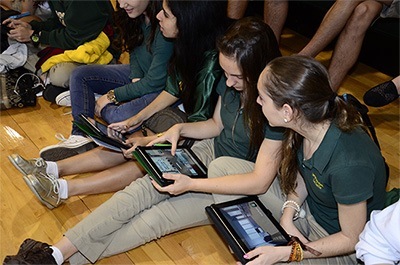
Photographer: COURTESY PHOTO
Immaculata-La Salle students check their iPads during the Apple Distinguished Program award presentation. At the same time, everyone received an email with a rendering of the soon-to-be-remodeled library, which will feature glass walls that can be written on and more of a lounge feel.
The guru behind iLearn@ILS is an alumnus, Freddy Padovan, who now holds the title of executive director of development and technology at the school. He stressed that “the technology doesn’t drive the school. The curriculum drives the school.”
But it’s a curriculum infinitely enhanced by the technology.
PREPARATION
The process began in August 2011, when “we realized that we had to upgrade the technology,” said Salesian Sister Kim Keraitis, who took over as principal two years ago.
Padovan and a committee of 13 faculty members began meeting, looking, he said, for “a device that would enhance the student-teacher experience.” Once they settled on iPads three months later � partly because of their extended battery life � Padovan began focusing on helping teachers integrate the technology into their lessons.
He met one-on-one with every teacher, introduced them to Apple’s iTunes U, explained the technology, went over their lesson plans and asked them, how can technology help you? After four months, he received 60 lesson plans from the teachers, all of which will soon be published in e-book form and available for purchase on the iBookstore.
Over the summer of 2012, all of the teachers at Immaculata-La Salle received their own iPads and 40 hours of training, while department heads searched for electronic content. Padovan conducted in-service workshops for his school as well as other archdiocesan teachers and even shared his ideas at the National Catholic Educational Association’s annual convention � something he will do again this year.
He also trained Immaculata-La Salle students to help him troubleshoot glitches, in effect creating an in-house tech squad to troubleshoot problems for both teachers and fellow students. And he began upgrading the school’s infrastructure, setting up 53 Wi-Fi access points throughout its seven buildings, which are located on 14 acres along Biscayne Bay.
“We had to do a lot of research. We had to do a lot of planning,” Sister Kim said, including coming up with a financial plan to pay for continual upgrades to the technology and infrastructure.
“We had minimal problems with the whole process,” she noted. “But it took a lot of time and work ahead of time.”
GEEK-ALUMNUS
In the middle of it was Padovan, who forwarded his office extension to his cell phone number as the first day of school neared, so that he could respond to parents’ and students’ texted, Tweeted and e-mailed questions even as late as 2 a.m., if he was awake.
“He was here every day, all day. He’s dedicated. His heart’s at Immaculata La Salle,” Sister Kim said. “He’s the geek but he and I were both sharing the same vision.”
“That’s why I love my job,” Padovan said. “Sister Kim really trusts me and my craziness.”
Although he could still pass for a student, Padovan graduated from Immaculata-La Salle in 2003. He worked in real estate and condo management until 2007, when the school’s previous principal hired him to put together the 50th anniversary history book. That three-month project turned into a part-time position as director of alumni that “evolved into this,” he said. “I’m here to continue designing the future.”
It’s a future where Padovan � aided by his technology coordinator Eric Taggart, a 2007 alumnus, or Scott Givonetti, the school’s “21st century education specialist,” or one of their trained students � can be notified of a problem at the push of a button: literally, an “I help students” icon on the iPad. Responding within 15 minutes, they will walk into the classroom of the student or teacher who summoned them and silently fix the problem without interrupting the class.
It’s a future where Padovan will be able to remotely access every device to check for improper content or usage, and remove the offending material or the app itself. (The iPads belong to the school until the students graduate, so the parents are essentially leasing to buy over four years.)
It’s a future where all 792 students took their midterms on their iPads � although “we did ask the teachers to have a paper copy just in case there was a glitch in the network,” Sister Kim said.
It’s a future where a course can be modified at a moment’s notice, Padovan said, by merely “dropping a link” onto students’ iPads.
It’s a future where even a Smartboard can prove too confining, so some classroom walls are treated with a special paint that allows the teacher to write on them with erasable markers.
It’s a future where a classroom can be rearranged within seconds, too, by pivoting the wheeled desks to encourage conversation and movement. “We work best walking at 1.4 miles an hour,” Padovan noted.
He said his goal is to have students arrive at school in the morning as enthusiastic as they leave in the afternoon.
‘AMAZING’
“It’s amazing,” said Sister Kim. “When I am in the classroom observing teachers using the iPads with their students, I wish I was back in the classroom. Textbooks help students read about the world but iPads bring the world into the classroom."
“The grades show it. They do very well,” said Teresa Suarez, who has taught French at Immaculata-La Salle for the past 29 years. “I don’t have any discipline issues. None. Zero.”
Padovan was one of her students. Now she is one of his “early adapters.” Her classroom is the prototype for future classrooms at the school, with the swivel desks and specially painted walls. Her language lab is You Tube, specifically the videos of France’s nightly newscasts. She was among the first to dump the textbooks and start teaching based on iPad content she created.
“I have more than 1,000 students enrolled,” she said of the three levels of French lessons she has uploaded to iTunes U.
“The biggest success for us has been just everyone feels supported. (They) don’t feel afraid to try anything,” said Padovan.
He himself teaches two computer classes � Tech 1 and Tech 2 � in a cramped storeroom turned classroom. Rows of sleek monitors line the walls, each desktop holding two keyboards: one for the Windows PC, the other for the Apple. The classroom also is used to teach robotics and computer-aided design.
Senior Gonzalo Nuñez is sitting in one corner of the room, intently looking at his monitor, with earphones on his head and an iPod on his desk. He is a student in the Tech 2 class engaged in a year-long independent study: to develop an app that can scan and read student ID cards.
“What he’s doing is work-force level application,” said Padovan. “If it works, he’ll have developed an app that can be sold to the larger educational community.”
It’s a perfect example of the role of the teacher in the 21st century classroom: to empower, to mentor, but not necessarily to dictate or lecture. In fact, Padovan freely admits, “I don’t know how to do it. But he does.”
Next to Gonzalo are seniors Nicholas Pujol and Guillermo Vega, iPads in hand. Guillermo is teaching himself Japanese � and also Portuguese, French and “a little Korean” � using the “whole library” he accesses from his iPad. While he could do the same thing on his desktop computer, he said, “It’s useful but not convenient.”
Asked what he plans to study given his love of languages, he replied civil engineering. “Math is the universal language,” he explained. “Everybody speaks it.”
Both Guillermo and Nicholas are part of Padovan’s tech squad. Both said they also appreciate their new, lightweight book bags, filled only with their iPad, some paper and pens. All their lessons, quizzes and homework assignments are stored on the iPads, and each student is free to devise his or her own way of organizing the files.
“I don’t like to take notes too much,” said Nicholas. The iPad lets him follow along on the material provided by the teacher. “I can just get the Power Point and write on top of it. It’s like having a book and you’re writing in it, annotating a book page.”
A TOOL
As enthusiastic as he is about “designing the future,” Padovan acknowledges that the fundamentals of education will not change.
“This is a tool,” he said of the iPad. “This is not the end-all. Teachers still need to teach. This is just another resource to bring the global classroom into our four walls.”
“When you get an iPad the possibilities are limitless. Because whatever you dream, you can make it happen,” Sister Kim said. But the important thing is not the device. “It’s what the device has helped us accomplish.”
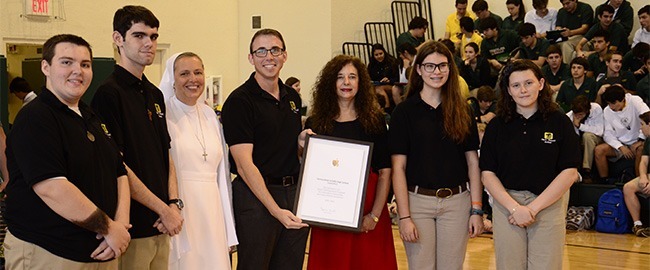
Photographer: COURTESY PHOTO
Posing with their Apple Distinguished Program certificate, from left, Immaculata-La Salle sophomores Brendon Cintas and Daniel Verdear, the school's principal, Salesian Sister Kim Keraitis, Fredy Padovan, executive director of development and technology, Kim Pryzbylski, archdiocesan superintendent of schools, sophomore Kathryn Sauer and junior Amber Morse.

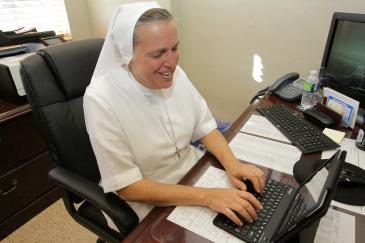
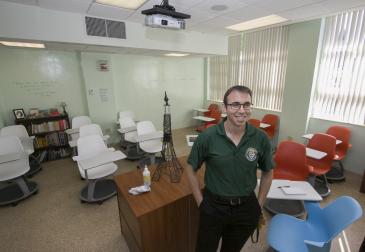
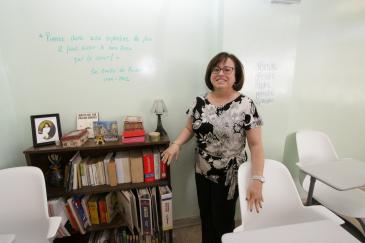
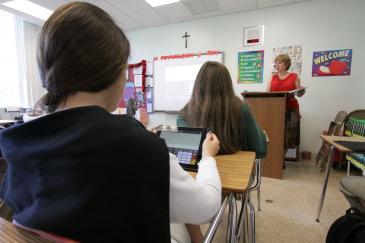
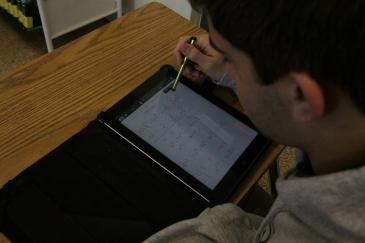
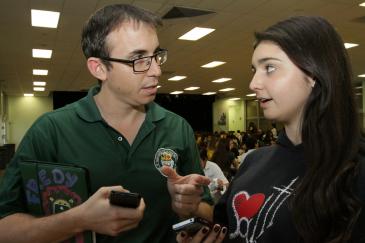
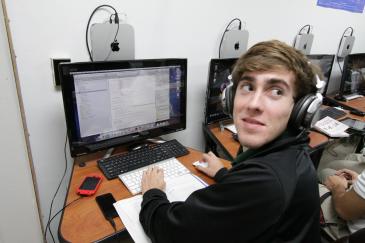
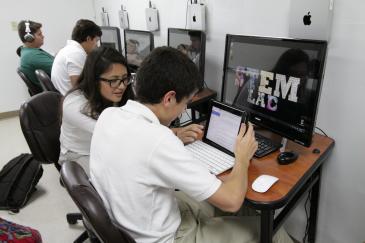
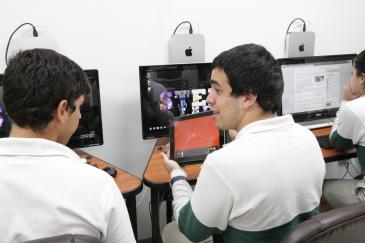
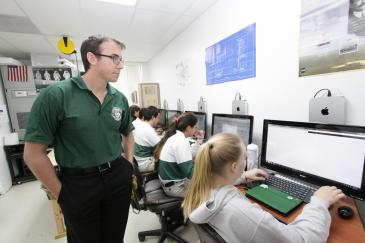
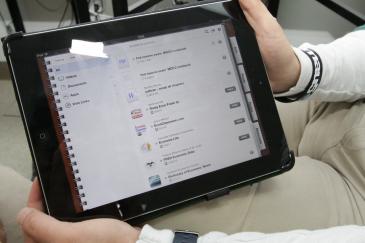
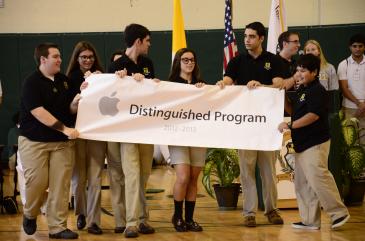
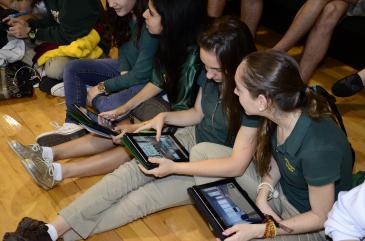
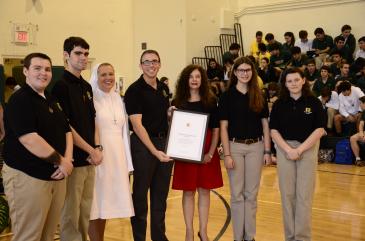

Comments from readers
Congratulations are in order to all of you for what you are, for all you do, and especially for this well-deserved recognition. Obviously, I want to commend the students for their input and hard work. Together you make ILS what it is.
May the Lord continue to bless your ministry.
Blessings,
Carlota E. Morales, Ed. D. and the community of Sts. Peter and Paul Catholic School
It was with great satisfaction and sincere heart that I congratulate all of you for this most deserved honor. You have worked very hard. You are wiling to share your knowledge with all of us who approach you. I am very proud of our students and we all extend our good wishes.
May the Lord continue to bless you,
Carlota E. Morales, Ed. D.
Principal
Sts. Peter and Paul Catholic School